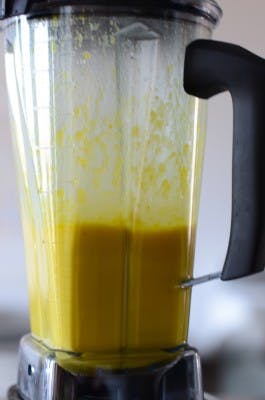Writing a cookbook takes a village. Particularly, a village of recipe testers. In the case of the Tacolicious book—which Joe, Telmo, and I are working on now with Ten Speed Press (Fall 2014)—the first round of testers includes Mike and Caitlin, our crack chefs at our Chestnut Street and Valencia Street locations respectively. These two have managed to squeeze in recipe testing along with running very busy restaurant kitchens.
The second round of testers includes both my mother—the tireless home cooking ninja behind my last three cookbooks—and San Francisco Cooking School student Lauren Godfrey. Lauren just happens to be a former creative director of an ad agency who just happens to be a culinary school student now staging at SPQR (I’m just saying—she’s not exactly twiddling her thumbs). We hit the tester jackpot with her: She’s creative, aesthetically-driven, detail oriented, and die-hard T-lish fan to boot (scroll down to the “five things [she] can’t live without”—something Joe and I stumbled across while Google stalking her).
This duo is making sure that the recipes work for normal people. People who don’t happen to cook for a living, or work in massive quantities, or have walk-in refrigerators, or prep cooks, or grills at the ready, or meat and produce deliveries, or human dishwashers. (Ok, well, for the latter job there’s my dad, but you know what I mean.)
Being a recipe tester is not glamorous. First you have to shop for the ingredients, schlep them all home, cook the recipes to the tee (weighing things, timing things, measuring things, generally being anal), and then clean up. And often the recipe doesn’t work the first time around. It might be too spicy—but then, really, what does too spicy mean? This has turned out to be an existential question I’m having to grapple with. The recipe might not yield enough, it might be too complicated, it might not blend up in the blender. In these cases, the tester has to buck up and do it all over again. Like you were dying to have another 3 cups of habanero salsa.
On the upside, being a recipe tester also garners you a lot of friends. My mom has thrown endless taco-themed dinner parties over the past few months. People she barely knows have come out of the woodwork to suggest that they might be a good taster, you know, should she need someone to give feedback.
I asked Lauren and my mom to share a few lessons learned thus far from cooking from the Tacolicious book:
1. Don’t expect all Mexican dishes to be spicy. The spice often comes from the salsa. —Mom
2. If you have a recipe that calls for one jalapeño, taste it first. All chilies have a range of heat, so you could have your hands on a mild jalapeño (yawn) or a firebomb (yowza). —Lauren
3. Tomatillos are fun to grow. [Especially if you live in a hot area like Sonoma, as my parents do.] —Mom
4. Mexican food fits a lot of dietary needs. Vegan? Salsa, guacamole and veggie tacos make for a tasty plant-based meal, not to mention that enjoyed together rice and beans, make a complete protein. Going gluten free? With the exception of tortas, you won’t find much wheat in Mexican cuisine. But beware: Some corn tortillas have added wheat, so be sure to check out the ingredients list before you buy. —Lauren [who’s very healthy]
5. Add an egg or two to any of Mexican braised meats that you have leftover, chop up some cilantro and toss it in, and warm up a few tortillas, and you’ve got breakfast! [This is also true for eating leftovers from the restaurant, btw. Guajillo-braised short ribs and eggs … mmmm.] —Mom
6. A good Mexican market is a treat. Check out the dried chilies, the meats, the produce. [If you’re looking for a Mexican supermarket, Mi Pueblo, is pretty great and has locations in San Rafael and Oakland. In SF, a classic and one of our favorites, is Casa Lucas.] —Mom
7. Not all tortillas are equal. Hunt for the best tortillas at a tortilleria. [Such as La Palma in San Francisco, and Tortilleria Jalisco in Sonoma, which also happens to make killer flour tortillas.] —Mom
8. When working with chilies, gloves are a good idea. At the very least, remember to keep your fingers out of your eyes! —Mom and Lauren




